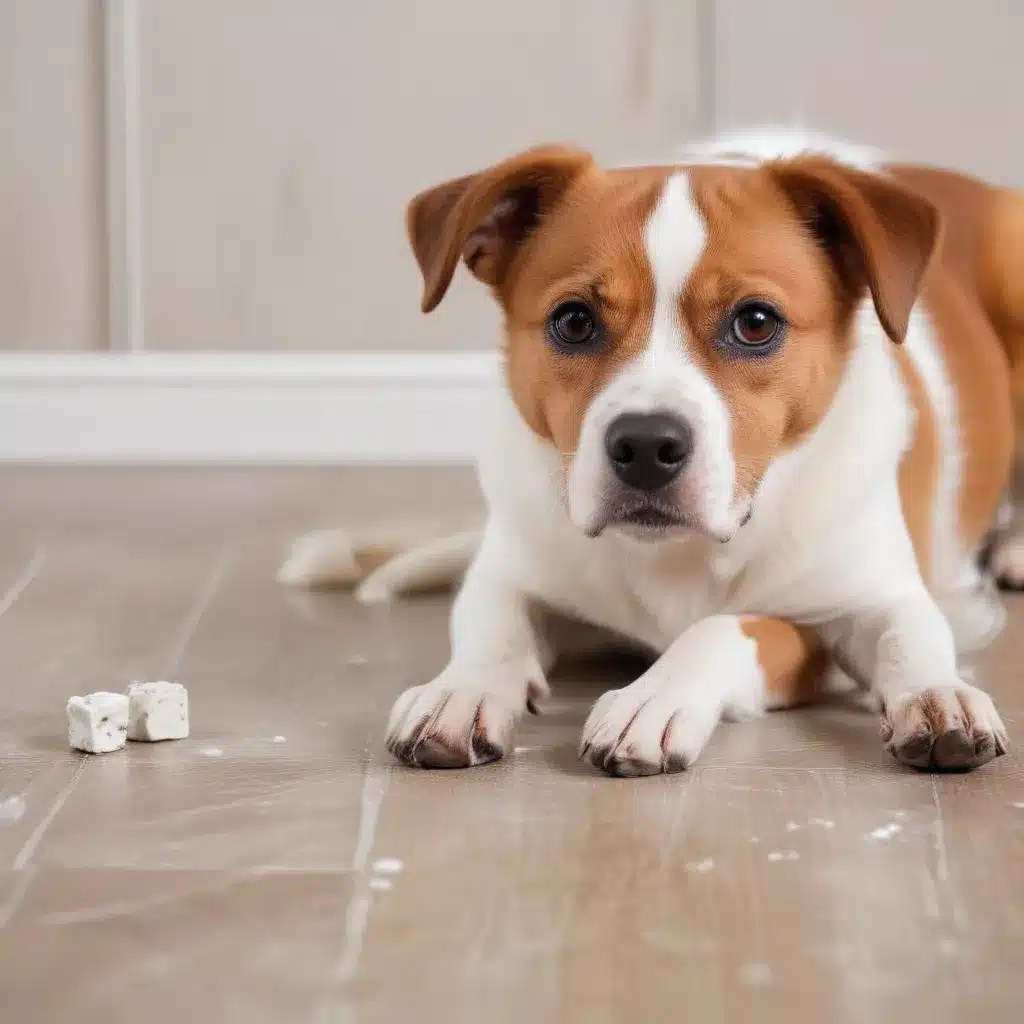
Ruff Day at the Office? Not If You Dog-Proof Your Home
As a dog parent, I know the joy of coming home to a wagging tail and a sloppy kiss. But did you know that your cozy abode could be hiding some deadly dangers for your furry friend? That’s right, the average household is chock-full of potential poisons that can make your pup seriously sick – or worse. Don’t worry, though, I’ve got your back (and your dog’s) with this comprehensive guide to common household toxins and how to dog-proof your home.
Medications: The Sneaky Snack
Let’s start with the obvious culprit: medications. Whether it’s your daily vitamin, your spouse’s blood pressure pill, or little Timmy’s ADHD prescription, these seemingly innocent tablets and capsules can pack a lethal punch for our canine companions. In fact, according to the ASPCA Animal Poison Control Center, over-the-counter medications have topped the list of pet poisons for the past five years running.
You see, dogs metabolize drugs very differently than we do. What might be a harmless dose for a human can quickly send your pup into organ failure or severe gastrointestinal distress. So, do yourself and your furry friend a favor – keep all medications securely stashed away in pet-proof cabinets or drawers. And never, ever give your dog any kind of medication without your veterinarian’s explicit approval and instructions.
Food Faux Pas: Toxic Treats
Speaking of things your dog shouldn’t ingest, let’s talk about food. As much as we love to spoil our pups with table scraps and “people food,” the truth is that many common human edibles can be downright dangerous for our canine companions.
For example, did you know that chocolate, grapes, raisins, onions, and even xylitol (a sugar substitute) can all wreak havoc on a dog’s digestive system? The consequences can range from mild tummy troubles to life-threatening complications like kidney failure or seizures. And the severity often depends on the size of your pup and the amount they’ve consumed.
My advice? Keep all people food safely stored in the pantry or fridge, and resist the temptation to share your lunch or dinner scraps. If you really want to treat your four-legged friend, stick to dog-safe snacks and consult your vet for appropriate options.
Household Hazards: Lurking in the Shadows
But it’s not just what’s in your cabinets and on your plate that can pose a risk to your pup. Nope, your household cleaning products, lawn and garden chemicals, and even some of your home decor can also be potential poisons in disguise.
Take a look around your abode – those brightly colored bottles of bleach, disinfectants, and other cleaning agents may look enticing to a curious canine, but they can cause everything from skin irritation to respiratory distress if ingested. And don’t even get me started on the dangers of rodenticides, insecticides, and fertilizers. Not only can they make your pup sick, but they can also attract pets with their tempting scents and flavors.
The solution? Invest in pet-safe, natural cleaning alternatives whenever possible, and keep all chemical products securely stored in locked cabinets or sheds. And when it comes to your home’s decor, you’ll want to do a thorough audit of your plants, as many common houseplants and landscaping favorites (think lilies, azaleas, and sago palms) can be toxic to dogs.
A Lesson in Dog-Proofing
Whew, that’s a lot of potential hazards to watch out for, right? But don’t worry, my fellow dog parents – with a little diligence and some strategic dog-proofing, you can keep your furry friend safe and sound.
First and foremost, make a habit of regularly scanning your home for any potential toxins or choking hazards. Secure all medications, cleaning supplies, and chemicals in pet-proof containers or cabinets. Invest in some childproof latches for any low-lying drawers or cabinets that your curious canine could access. And when it comes to your landscaping, stick to the ASPCA’s list of non-toxic plants.
Oh, and don’t forget to keep a close eye on your pup, especially when you’re cooking or eating. Sneaky pups have a way of sniffing out the tastiest (and most dangerous) treats, so it’s best to keep them out of the kitchen and dining areas whenever possible.
Calling All Canine Caregivers
Now, I know what you’re thinking: “This all sounds like a lot of work!” And you’re not wrong. Keeping a dog-safe home does require a bit of extra effort and vigilance. But trust me, it’s 100% worth it to ensure your furry friend stays happy, healthy, and, most importantly, alive.
And if you ever have any doubts or concerns about a potential toxin, don’t hesitate to reach out to the experts. The ASPCA Animal Poison Control Center is available 24/7 to provide guidance and support. You can also consult your local AAHA-accredited veterinary hospital for personalized advice on keeping your canine companion safe and sound.
After all, our dogs are part of the family, and we want them to be around for many more tail-wagging, face-licking years to come. So, let’s do this – together, we can create a dog-proof haven that keeps our furry friends safe and sound. Who’s with me?

